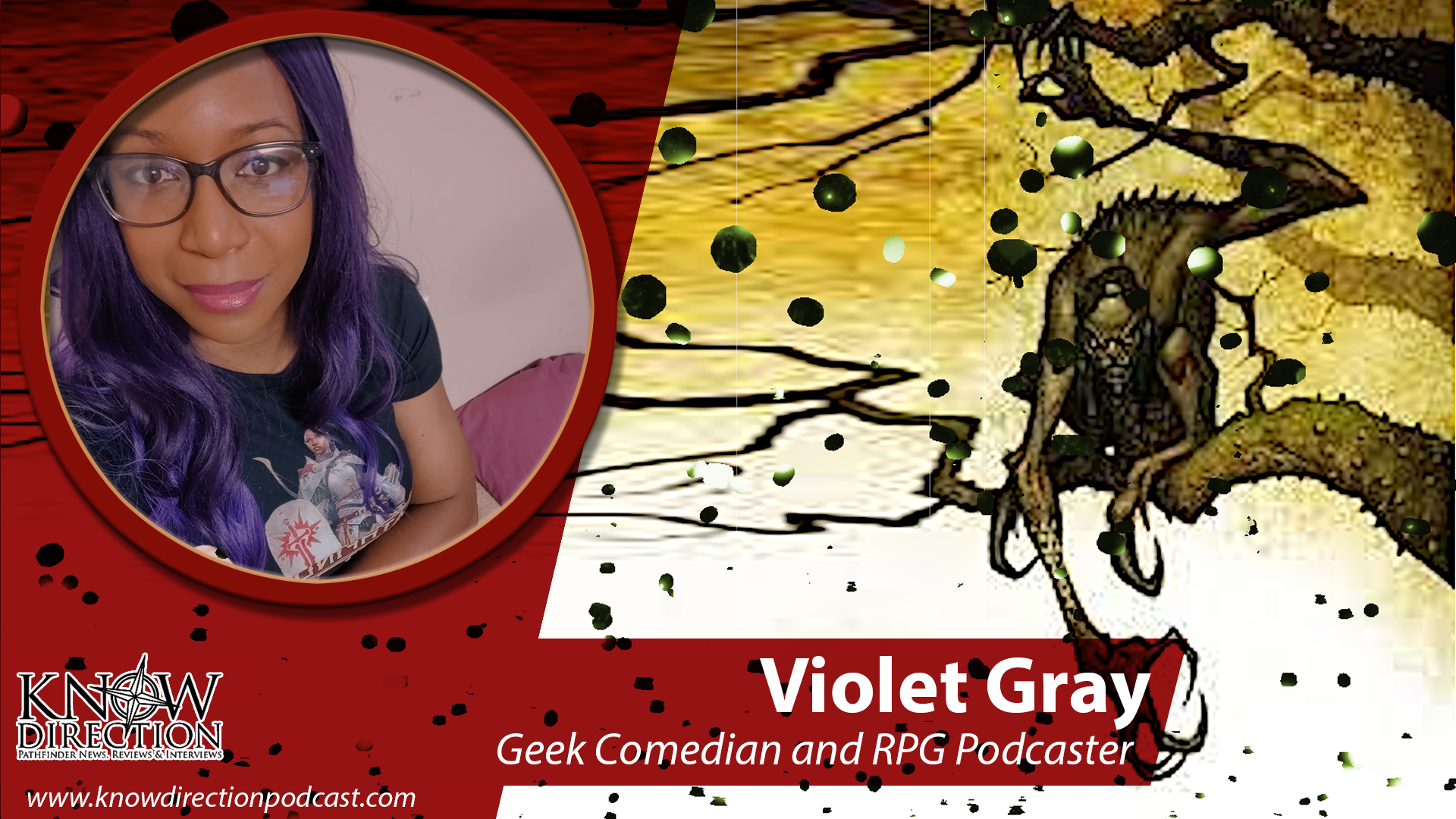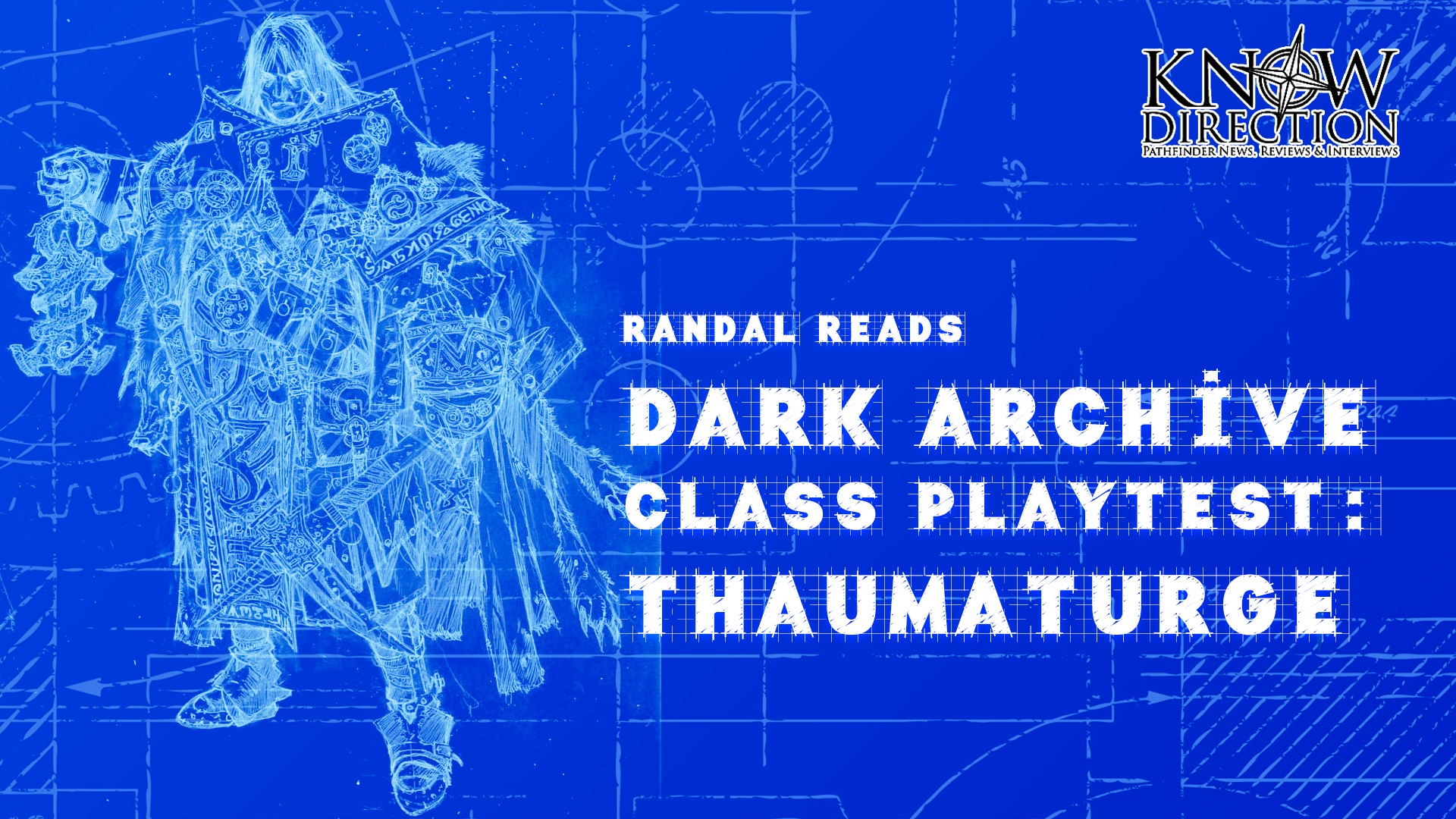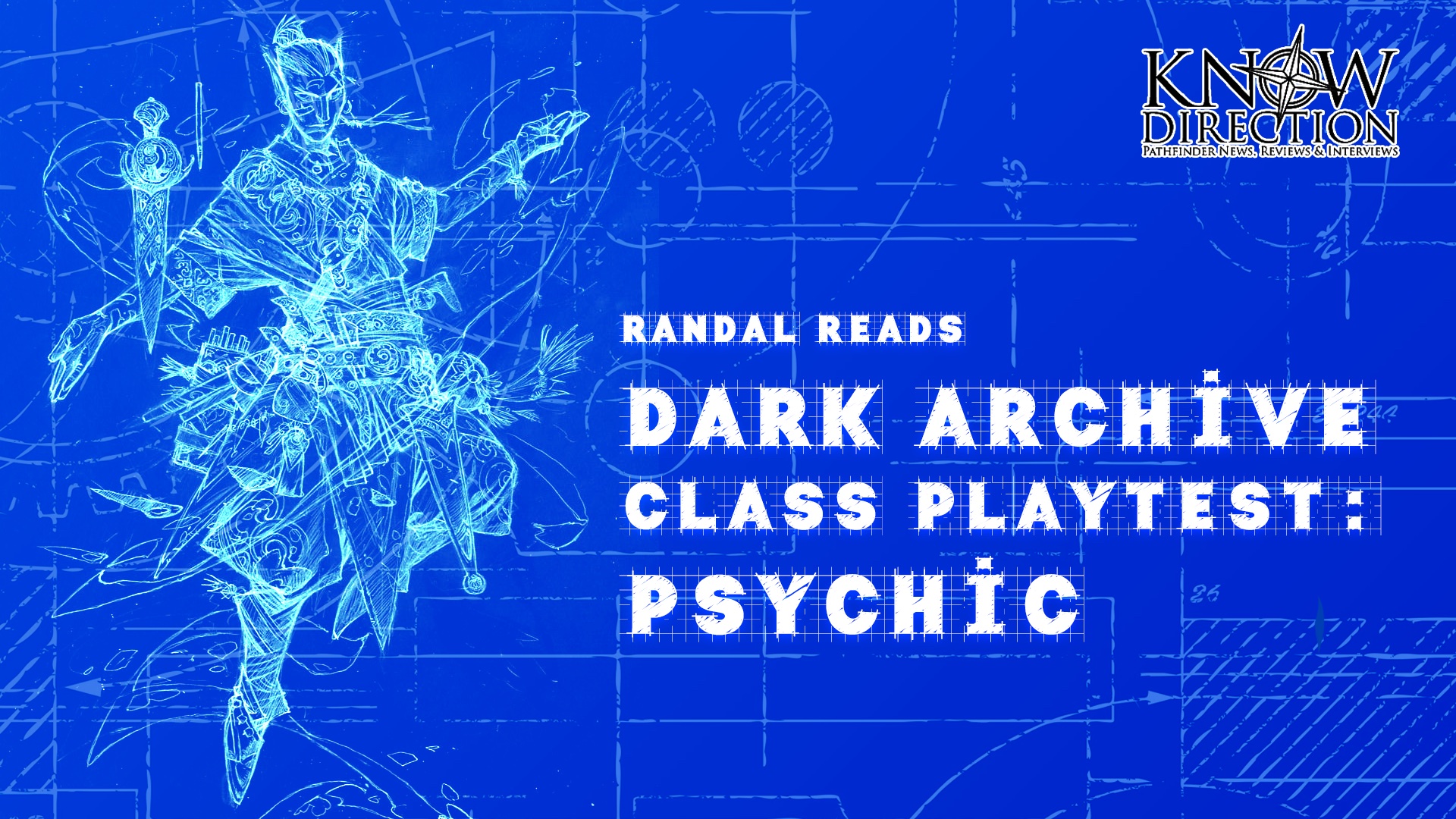Hello again and welcome back to another special review blog by me, your host, Randal. You may know me from such blogs as Groundbreaking and Terraforming or previous reviews of Pathfinder Second Edition Core Rulebook and Pathfinder Second Edition Advanced Player’s Guide. Here we are, facing down another (albeit somewhat virtual) GenCon which I don’t be attending nor performing any official Know Direction duties (such as recording panels or wrangling guests). What better way to celebrate than to have a read through of what is likely to be my favorite book in PF2e for years to come … Secrets of Magic! This book promises updated versions of the playtested Magus and Summoner, both of which I love and have thoughts on.
While returning readers likely remember, I would like to remind them and point out to new readers how this review works. It is pretty straight forward and simple. I read the content, give you some important info about it, and then give you my thoughts on it as I think them. For the most part that means I will be waxing poetic about all the character builds that I will invariably come up with while reading this book (but not have near enough time to every build and play). Other times it will be meaningful commentary on my concerns about wording and the implications of RAI vs RAW. I have no special background or leverage on anything other than a super fanboy, so while I will be very “pro“on almost the entire contents, any rulings I comment on or alterations I suggest are simply my own opinions, and quite probably half-baked by virtue of simply being the first time I thought about them … because, as mentioned, these thoughts are quite literally the thoughts I have while reading this book.
Shall we get started!?
Introduction
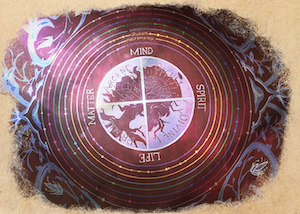
Abstract Layout of the Structure of Magic
Ahh, here we are again … that new book/content/rules smell. The Structure of Magic … I. Love. It. I am not even in the introduction and I am enjoying this waaaay too much.
“The schools are the fingers that shape the magic, the traditions the arm that directs them, and the essences the beating heart that powers their movement.”
Ok, the actual introduction is still bringing it.
“And more than just the rules, this book digs deep into how magic feels and the ways spellcasters understand the magic of their world.”
The “Choosing Expansions” section is the obligatory “you don’t have to use all of this, pick and choose what is right for you” disclaimer that I have grown to love about the way Paizo is handling 2e.
The sidebar chapter summaries are, again, the new standard and I love them … and telling me that in Chapter 1 I will be reading about magic “from the writings of Golarion’s magical luminaries” … seriously, I am already hooked … please stop pulling on the hook, I can’t take any more!! (Ok, please give me more of what I want, I can handle it and I love it.)
The brief rundown of what is ahead of us, via the Chapter Summaries sidebar:
- Learn how magic works from Golarion natives. Common and rare backgrounds geared towards those with a magical past.
- Magus and Summoner classes, plus their multiclass archetypes.
- Over 200 new spells (including rituals and focus spells).
- New items from existing categories, but more importantly, new magical item categories: fulu consumables, grimoires, magical tattoos, personal staves, spell catalysts, and spellhearts!
- New. Forms. Of. Magic … elementalism, geomancy, shadow magic, rune magic, more!
Chapter 1 – Essentials of Magic
We were told we would be reading about magic from the perspective of a caster/user/scholar. But I am still excited to actually read the content in that format. We begin with a letter from a practitioner of some kind handing over different “Tradition Treatises” to a younger family member that is interested in studying magic. When commenting on the traditions, the author gets in digs against the other traditions, and for some reason I find it rather grounding and relatable.
The sidebar comments on the fact that the upcoming backgrounds (including rare) are geared towards a magical bent, while also pointing to backgrounds from the CRB and APG that would work well for a character somehow connected to magic.
Excerpts from Chapters 1 & 3 of Principals of Elementary Thaumaturgy, 7th Ed. (Acadamae, 4720) by Toff Ornelos
The content formatted as excerpts from works of magical texts is amazing. Well done. Written and laid out as an educational text, complete with annotations. They are doing a wonderful job of keeping the immersion hinted at in the introduction. Regarding the “memory palace” in reference to a wizard’s spell preparation, they discuss a palace with 10 floors, and it has the following annotation:
“Why ten floors? Difficult to say, but experimental data clearly shows that spells can be sorted into ten bands of power and complexity, aside from simple cantrips. The general consensus is that this reflects something fundamental in the mathematics of our reality, though iconoclastic scholars such as Prof. Foridius argue that it reflects nothing more than an artifact of our base-ten counting system.”
I think this is a really great way of discussing our meta-game data and rules mechanics within the context of the game that not only makes sense within the game’s lore, but allows for variety while also engaging in the topic in exactly the way we discuss such things in real life.
Excerpts from Chapters 2 & 6, Journeys of the Spirit and Flesh: A Thousand Paths to Nethys, by Zorahar the Wandering Cleric
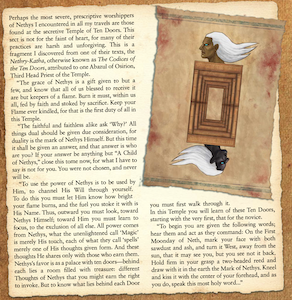 I really enjoyed the expansion on Nethys as a duality of arcane and divine. The existential bit about “how do we know divine magic is divine and from the gods” mixed with “cantrips as a residue of a god’s trust” really shows a lot of thought.
I really enjoyed the expansion on Nethys as a duality of arcane and divine. The existential bit about “how do we know divine magic is divine and from the gods” mixed with “cantrips as a residue of a god’s trust” really shows a lot of thought.
“Why does flawed occultism always involve tentacles?” Indeed. I always enjoy the digs, this time at arcanists and their puzzle boxes. I really felt the comparison of occult magic to that of a tapestry of the stories told and untold.
A bard’s music isn’t merely pretty; it’s a carefully crafted analysis of what society’s taught you to love and fear, paired with a persuasive tug at those unseen threads.
This theme continues by referencing chanting cultists again, that part of what makes occult rituals work is simply that the participants are relying on the lore and myth that the ritual has worked before. And, of course, if one practitioner thinks of tentacles, you get tentacles. Aside from my brain misquoting Archer (“Do you want tentacles, Barry? Cause this is how you get tentacles.”) this gives me strong Ghostbusters “Traveler” vibes … “The Traveler has been chosen!”
The image invoked by the druid calls to me. I almost always play some form of arcanist, but this dialog from a grandmother to a grandchild, describing the way in which connecting your soul with nature is the true magic just … it calls to me as a human. I also really wanna play a druid now. The way in which primal magic is set apart, the exclusion of precision because the connection to the elements of nature is more important.
On Essences
Written by: Marquise Cordelia Perseis
Edited by: Lazeril of New Thassilon
This piece takes a previously written essay (in world, not actual print) about the essences Life, Matter, Mind, and Spirit (not in that order) from the point of view of an arcane scholar and adds in edits from an Oracle of Life. The content about the essences is great, I really enjoyed the look at how magic works and is considered from a scholarly perspective. I felt the back and forth was done wonderfully with the counterpoints, agreements, and disagreements. As I have mentioned before, I am really enjoying the digs from one scholar to another, and this piece did not disappoint with comments such as “This is not bad, for a wizard, but your Taldan bias is showing.” and “You should mention that maybe some of these contradictions aren’t really contradictions at all, when viewed from outside the lens of an arcane scholar.”
Thanks for reading along … tune in tomorrow as I read about The Eight Arches of Incantation and Magical Backgrounds. And, as always, please join us at our Discord server https://discord.gg/Rt79BAj to let me know what you think or simply have a chat!


